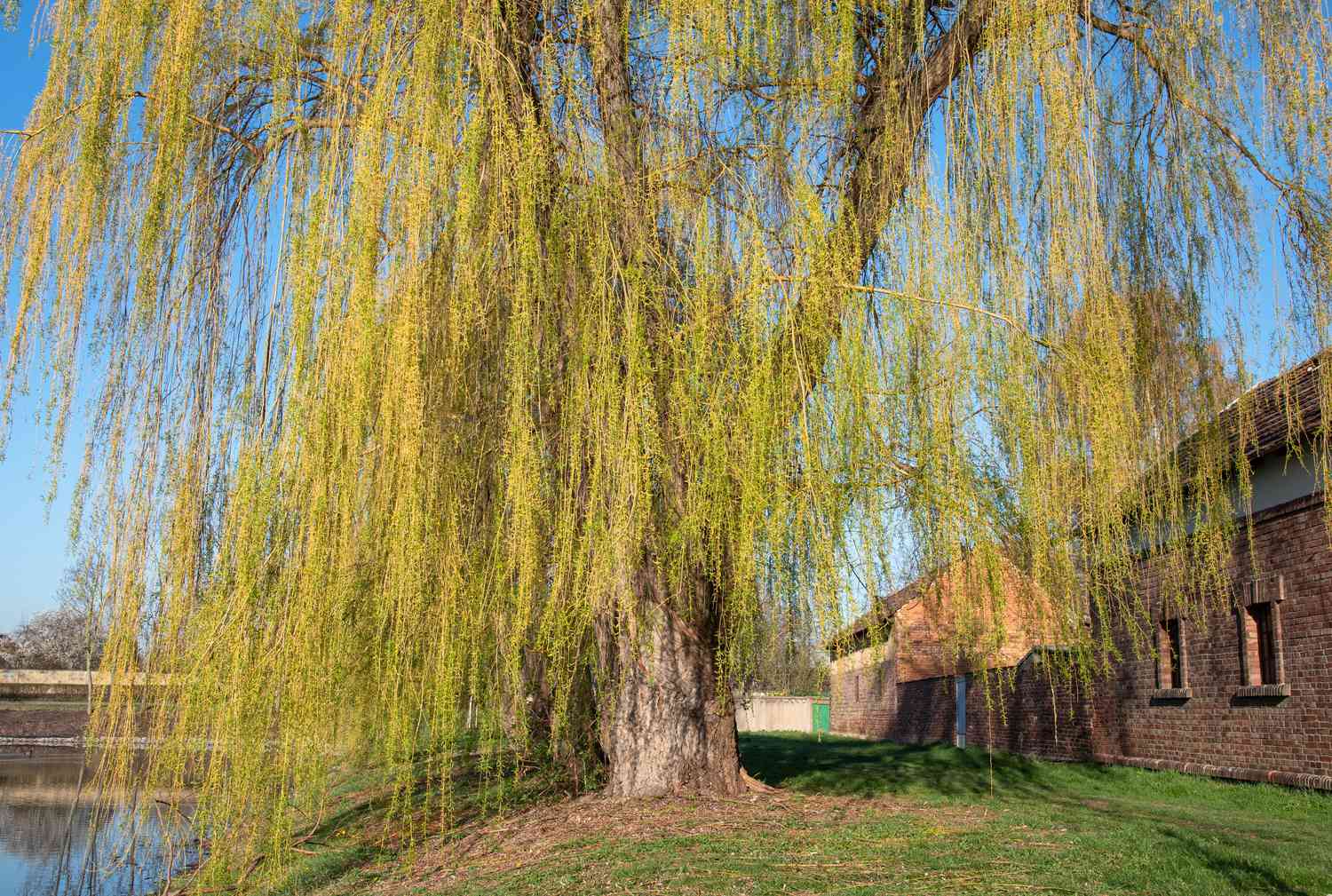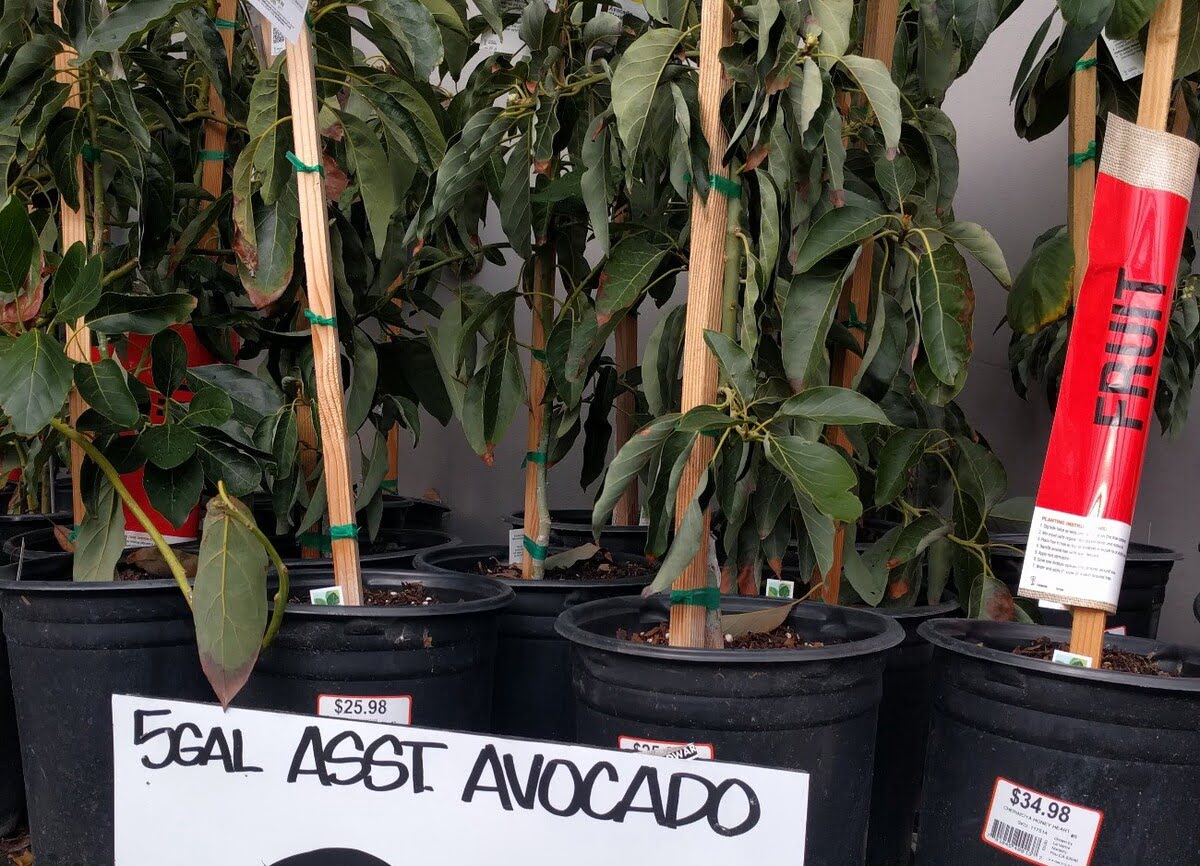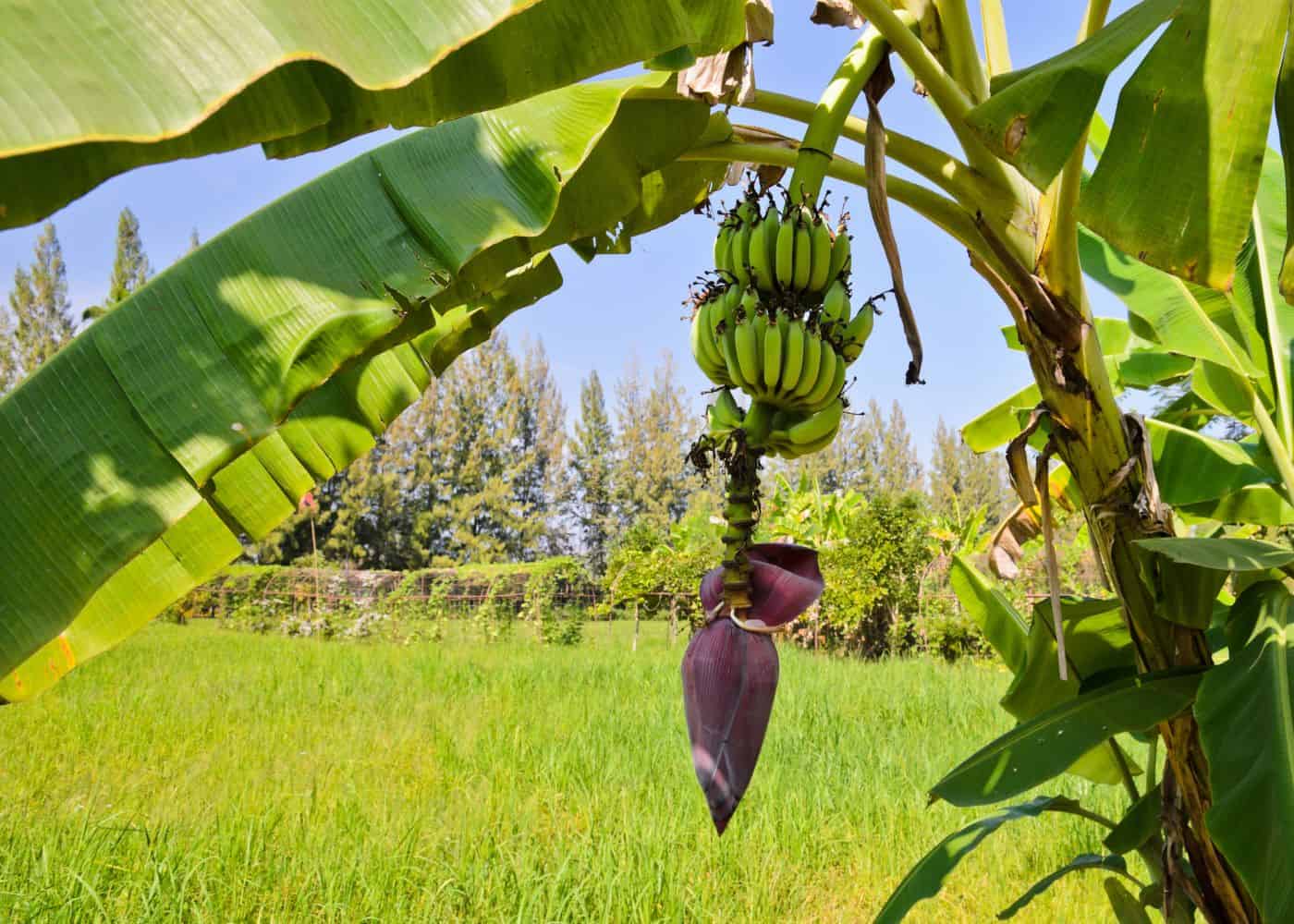Home>Gardening News and Trends>Latest News>Where Are Willow Trees Found


Latest News
Where Are Willow Trees Found
Published: November 9, 2023
Discover the latest news on where willow trees are found, including their natural habitats and geographical distribution. Stay updated with the most recent information on willow tree locations.
(Many of the links in this article redirect to a specific reviewed product. Your purchase of these products through affiliate links helps to generate commission for Chicagolandgardening.com, at no extra cost. Learn more)
Table of Contents
Introduction
Willow trees are known for their graceful branches, delicate leaves, and the soothing sound created by their leaves rustling in the wind. These trees have a rich history and are deeply rooted in folklore and mythology. From providing shade in ancient gardens to serving as inspiration for poets and artists, willow trees have captivated human fascination for centuries.
Characterized by their slender, flexible branches and narrow, elongated leaves, willows belong to the Salix genus, which consists of around 400 different species. These trees are renowned for their ability to thrive in various environments, ranging from wetlands to arid regions, making them adaptable to different climates and soil conditions.
The natural habitat of willow trees varies depending on the species, with some being native to specific regions while others have a wider distribution. They are found in various parts of the world, including North America, Europe, Asia, and other regions with suitable growing conditions.
This article explores the natural habitat and distribution of willow trees across different continents, highlighting their adaptability and significance in various ecosystems. So, let’s embark on a journey to discover where these majestic trees can be found.
Characteristics of Willow Trees
Willow trees are renowned for their distinct physical features and unique characteristics. Let’s delve into some of the key traits that define these magnificent trees:
- Graceful Appearance: Willow trees are known for their elegant and graceful appearance, with long, cascading branches that create a gentle and fluid silhouette. Their branches often bend and sway, creating a mesmerizing visual display.
- Slender and Flexible Branches: The branches of willow trees are thin and supple, allowing them to bend under the weight of heavy snow or strong winds without breaking. This characteristic gives the trees resilience against harsh weather conditions.
- Narrow and Elongated Leaves: Willow trees have narrow, elongated leaves that vary in color and texture. The leaves are typically green, but some species may have silver or purple hues. They are known for their unique ability to tremble and flutter even in the slightest breeze.
- Rapid Growth: Willow trees are among the fastest-growing tree species, with some varieties being able to grow up to 10 feet in a single year. Their rapid growth makes them popular choices for landscaping projects or reforestation efforts.
- Deep Root Systems: Willow trees have extensive and deep root systems that enable them to reach water sources deep within the soil. This adaptability allows them to thrive in wetland areas and along riverbanks.
- Medicinal Properties: The bark and leaves of certain willow tree species contain a compound called salicin, which has analgesic and anti-inflammatory properties. This compound served as the basis for the development of aspirin, a widely used pain reliever.
These distinctive characteristics make willow trees not only visually appealing but also ecologically and medicinally significant. Their adaptability and unique attributes have allowed them to play important roles in various ecosystems and human history.
Natural Habitat of Willow Trees
The natural habitat of willow trees varies depending on the species and their specific requirements. Generally, willow trees are found in regions with abundant water sources, such as near rivers, lakes, marshlands, and wetlands. These trees have adapted to various types of soil, including clay, sand, and loam.
Willows are well-suited to wet environments due to their ability to tolerate waterlogged soil and periodic flooding. They have evolved strategies to cope with such conditions, including the development of specialized root systems that can extract oxygen from the water and high water absorption rates to ensure their survival.
These trees also thrive in areas with high humidity, as the humidity aids in moisture retention and reduces water loss through transpiration. As a result, willow trees can be found in temperate and sub-arctic regions where the climate supports their growth.
While many species of willow trees prefer wet habitats, some have adapted to drier conditions. These species typically grow in areas with access to underground water sources, such as near streams or in regions with high groundwater levels.
Willow trees are often found in riparian zones, which are areas along the banks of rivers and streams. They play a crucial role in stabilizing riverbanks and preventing erosion due to their extensive root systems.
Additionally, willow trees are commonly found in floodplains, where periodic flooding enriches the soil with nutrients and provides optimal conditions for their growth. These areas offer a fertile and dynamic environment for willows to thrive.
In summary, the natural habitat of willow trees includes wetlands, riparian zones, floodplains, and areas with abundant water sources. Their ability to adapt to different moisture levels and soil types contributes to their wide distribution in various ecosystems worldwide.
Distribution of Willow Trees
Willow trees have a global distribution, with different species found in various regions around the world. Their adaptability has allowed them to colonize diverse environments and thrive in both temperate and sub-arctic climates. Let’s explore the distribution of willow trees across different continents:
North America:
In North America, willow trees are widespread and can be found from Alaska to Mexico. Various species are present throughout the continent, with some of the most common being the black willow (Salix nigra), shining willow (Salix lucida), and peachleaf willow (Salix amygdaloides). They often grow along riverbanks, in wetlands, and in areas with high moisture.
Europe:
Willow trees are also abundant in Europe, with several species native to the continent. The white willow (Salix alba), crack willow (Salix fragilis), and bay willow (Salix pentandra) are among the common species found in different parts of Europe. These trees thrive in moist habitats, such as riverbanks, marshes, and lakeshores.
Asia:
Asia is home to a wide range of willow tree species that are distributed across various countries. The weeping willow (Salix babylonica), native to China, is one of the most iconic and recognizable willow species. It is often associated with traditional Asian gardens and landscapes. Other species, such as the Japanese pussy willow (Salix gracilistyla), are commonly found in Japan and other parts of East Asia.
Other Regions:
Willow trees are not limited to North America and Europe. They also have a presence in other parts of the world. In South America, species like the golden willow (Salix alba var. vitellina) can be found. In Australia, the weeping willow (Salix babylonica) is present, along with other introduced species. Africa and Antarctica have limited native willow tree populations.
Furthermore, willow trees have been introduced to various regions outside their native ranges, including New Zealand, where they have become established in wetland areas.
Overall, the distribution of willow trees spans continents and showcases their ability to adapt to different climates and environments. Whether in North America, Europe, Asia, or other regions, these trees play essential roles in local ecosystems.
North America
In North America, willow trees can be found across the continent, from the northernmost regions of Alaska to the southern parts of Mexico. The diverse ecosystems of North America provide suitable habitats for various species of willows. Let’s explore the distribution of willow trees in different parts of the continent:
United States:
The United States is home to a wide range of willow tree species, with different types found in various regions. The black willow (Salix nigra) is native to the eastern and central parts of the country, often found along riverbanks and in wetlands. The shining willow (Salix lucida) is prevalent in the western states, while the peachleaf willow (Salix amygdaloides) can be found in the Great Plains and Midwest. Other notable species include the sandbar willow (Salix exigua) and the pussy willow (Salix discolor).
Canada:
In Canada, willow trees are widespread and can be found from coast to coast. Various species can be seen throughout the country, ranging from the Arctic tundra in the north to the temperate forests of the east and west coasts. The diamond willow (Salix planifolia), subalpine willow (Salix subalpina), and Pacific willow (Salix lucida) are among the species found in different regions of Canada.
Mexico:
In Mexico, willow trees are predominantly found in the northern regions. The desert willow (Chilopsis linearis), although not a true willow, is a prominent tree species in the arid regions of northern Mexico. Its long, slender leaves resemble those of traditional willow trees and provide some of the same aesthetic appeal.
The distribution of willow trees in North America is influenced by factors such as climate, soil conditions, and the availability of water sources. Riverbanks, wetlands, and areas with high moisture levels are particularly favorable habitats for these trees.
Willow trees in North America play crucial ecological roles, providing shade, stabilizing riverbanks, and creating habitats for various animal species. Additionally, they have cultural significance in Native American traditions and continue to be valued for their aesthetic beauty in landscaping and urban environments.
Europe
Europe is home to a rich diversity of willow trees, with different species distributed across the continent. These trees thrive in various habitats, ranging from riverbanks to wetlands and forested areas. Let’s explore the distribution of willow trees in different parts of Europe:
United Kingdom:
The United Kingdom is known for its lush countryside and abundant greenery, providing an ideal habitat for willow trees. The white willow (Salix alba) is a native species that can be found in wetland areas, along riverbanks, and in low-lying regions. Other species, such as the crack willow (Salix fragilis) and bay willow (Salix pentandra), are also commonly found in the UK.
Scandinavian Countries:
Willow trees are prevalent in the Scandinavian countries, where they can be found in both natural and cultivated environments. The gray willow (Salix cinerea) and goat willow (Salix caprea) are among the species native to this region. These trees often grow near rivers, in wetlands, and in forests, contributing to the scenic landscapes of countries such as Sweden, Norway, and Finland.
Central and Eastern Europe:
In central and eastern parts of Europe, willow trees are found in a variety of settings. The golden willow (Salix alba var. vitellina) and white willow (Salix alba) are common species in this region. They can be seen along riverbanks, lakeshores, and in wetlands, adding charm to the countryside scenery.
Southern Europe:
Willow trees also have a presence in southern Europe. Species such as the crack willow (Salix fragilis), black willow (Salix nigra), and white willow (Salix alba) can be found in countries like Italy, Spain, and Greece. These trees often grow near water bodies, providing shade and enhancing the beauty of the Mediterranean landscapes.
The distribution of willow trees in Europe is influenced by factors such as climate, soil conditions, and the availability of water sources. They are an integral part of the European ecosystems and have cultural significance in folklore and traditional practices.
Overall, willow trees in Europe contribute to the scenic beauty of the continent’s landscapes, providing habitat for various species and adding a touch of natural elegance to its diverse environments.
Asia
The continent of Asia is home to a rich diversity of willow trees, with different species distributed across various countries and regions. These trees have adapted to diverse climates and habitats throughout Asia, from moist temperate regions to arid landscapes. Let’s explore the distribution of willow trees in different parts of Asia:
China:
China is known for its beautiful gardens and landscapes, where willow trees play a prominent role. The weeping willow (Salix babylonica) is native to China and is one of the most iconic and recognized species of willow trees. Its gracefully cascading branches and flowing leaves have become symbols of traditional Asian gardens.
Japan:
In Japan, willow trees are also esteemed for their elegance and beauty. The Japanese pussy willow (Salix gracilistyla), commonly known as Yanagi, is a native species found throughout the country. It is often planted in gardens and along water bodies, where its vibrant pink catkins add a touch of charm to the surroundings.
India:
In India, willow trees can be found in various regions and are primarily associated with the Himalayan foothills and the northern states. The Kashmir willow (Salix kashmiriana) is native to the Kashmir region and is known for its flexible branches, which are utilized in the production of cricket bats.
Other Asian Countries:
Willow trees can also be found in other Asian countries, including Korea, Mongolia, and parts of Central Asia. Different species are distributed across these regions, adapted to the specific climates, soil conditions, and availability of water sources.
The distribution of willow trees in Asia showcases their cultural significance, as they are often associated with traditional gardens, landscapes, and artistic representations. Throughout history, these trees have featured in poetry, paintings, and folklore, symbolizing beauty, longevity, and renewal.
Willow trees in Asia contribute to the aesthetic beauty of the continent’s landscapes, providing shade, habitat for various species, and inspiring artistic expressions.
Other Regions
Willow trees can be found in various other regions around the world, adding their beauty and ecological significance to diverse landscapes. While their presence may be more limited compared to regions like North America or Europe, they still contribute to the local ecosystems and serve specific purposes. Let’s explore the distribution of willow trees in these regions:
South America:
In South America, willow trees are not as widely distributed as in other continents. However, certain species, such as the golden willow (Salix alba var. vitellina), have been introduced to the region and have become established in wetland areas. These trees add a touch of elegance to the natural landscapes of countries like Argentina, Chile, and Brazil.
Australia:
Willow trees have also been introduced to Australia, where they have adapted to various regions. The weeping willow (Salix babylonica) is a common species that can be found along riverbanks and in wetland areas. Other species, such as the crack willow (Salix fragilis) and black willow (Salix nigra), have also been introduced and can be seen in certain parts of the country.
Africa:
In Africa, the distribution of willow trees is more limited compared to other continents. Some species can be found in specific regions, such as the Cape willow (Salix mucronata) in South Africa. These trees are usually located near water bodies and contribute to the ecological balance of their respective habitats.
Antarctica:
The harsh and extreme environment of Antarctica does not provide suitable conditions for the growth of willow trees. Therefore, they are not naturally found in this region.
While willow trees may have a more limited distribution in these regions, their presence still adds to the biodiversity and ecological value. They contribute to the local ecosystems, provide shade, and serve as homes for various animal species.
Overall, willow trees have made their mark in different parts of the world, no matter how small or limited their distribution may be in certain regions. Their adaptability and beauty make them an important part of the natural landscapes they inhabit.
Adaptability of Willow Trees
Willow trees are renowned for their adaptability, allowing them to thrive in a wide range of environments and conditions. This adaptability is evident in several aspects of their biology and physiology that enable them to survive and grow in various habitats:
Moisture Tolerance:
Willow trees are well-suited to moist environments and can thrive in areas with high water levels. Their extensive root systems enable them to access water sources deep within the soil, making them well-adapted to wetlands, riverbanks, and areas prone to flooding. They have the ability to tolerate waterlogged soil, thanks to specialized air channels in their roots that provide oxygen even in submerged conditions.
Drought Resistance:
While willow trees excel in wet environments, they also have the ability to withstand drought conditions. Certain species, such as the desert willow (Chilopsis linearis), have adapted to arid regions in Mexico and the southwestern United States. These trees have developed mechanisms to conserve water, such as deep-reaching roots, small leaves with reduced surface area, and the ability to shed leaves during dry periods to reduce water loss through transpiration.
Fast Growth:
Willow trees are known for their rapid growth, making them highly adaptable to different environments. They have the ability to establish quickly, helping to stabilize soil and prevent erosion. Their fast growth makes them valuable in reforestation efforts, as they can quickly provide shade, improve soil conditions, and contribute to ecosystem restoration.
Tolerance to Different Soil Types:
Willow trees exhibit tolerance to various soil types, including clay, sand, and loam. While specific species may have preferences for certain soil conditions, overall, willows can adapt and thrive in different soil compositions. This adaptability allows them to colonize diverse habitats and contribute to the ecological stability of various ecosystems.
Resistance to Disease and Pests:
Willow trees have natural defenses against common tree diseases and pests. They can withstand attacks from insects, such as aphids and caterpillars, and are less susceptible to diseases that affect other tree species. This resistance contributes to their ability to endure and thrive in different environments.
The adaptability of willow trees is not only beneficial to their survival but also contributes to their ecological importance. Their ability to grow in diverse habitats provides habitat and resources for a wide range of animal species, enhances soil stability, and promotes overall ecosystem health.
Conclusion
Willow trees, with their graceful appearance, unique characteristics, and remarkable adaptability, hold a special place in the natural world. From the wetlands of North America to the gardens of Asia, these trees have captivated our imaginations and become a symbol of beauty, resilience, and ecological significance.
Characterized by their slender, flexible branches and elongated leaves, willow trees possess traits that make them stand out in any landscape. Their rapid growth, deep root systems, and ability to tolerate diverse soil and moisture conditions allow them to colonize various habitats, ranging from wetlands and riverbanks to arid regions.
The distribution of willow trees spans across continents, with different species adapted to specific climates and environments. They can be found in North America, Europe, Asia, and other regions, contributing to the ecological balance and aesthetic beauty of their respective habitats.
These trees have proven their adaptability and resilience over centuries, playing crucial roles in stabilizing riverbanks, preventing erosion, providing shade, and creating habitats for a wide range of animal species. Additionally, certain species of willow trees have medicinal properties, reinforcing their importance in human history and traditional medicine.
As guardians of biodiversity, willow trees remind us of the intricate relationships between humans and the natural world. Their ability to adapt and thrive in different conditions serves as a reminder of the resilience and interconnectedness of ecosystems.
So, whether it’s the weeping willows gracing a traditional Asian garden or the black willows lining a North American riverbank, these trees continue to inspire and enrich our lives. Let us appreciate and protect these remarkable trees that have shaped our landscapes and contributed to the beauty and ecological balance of our planet.










